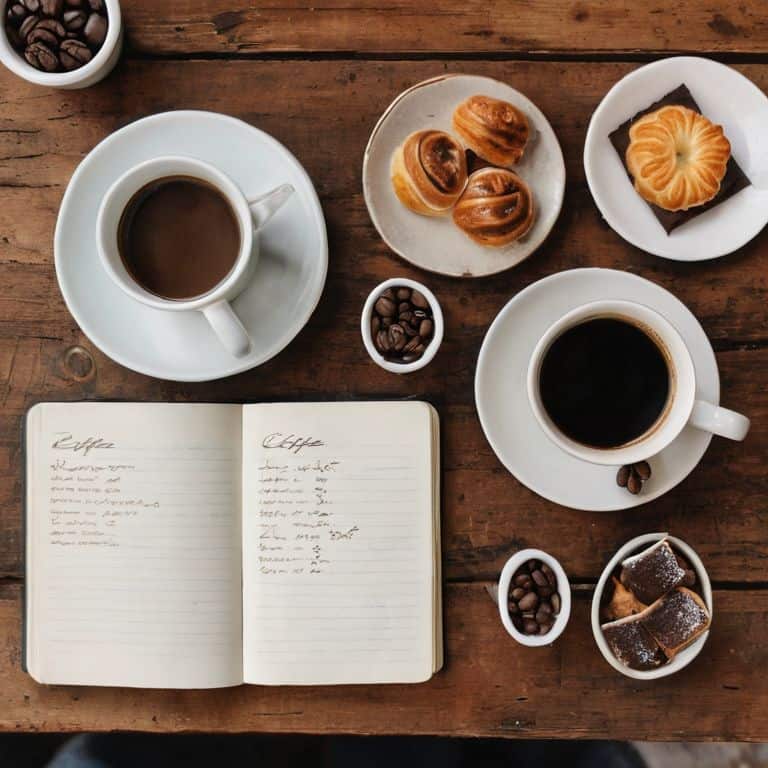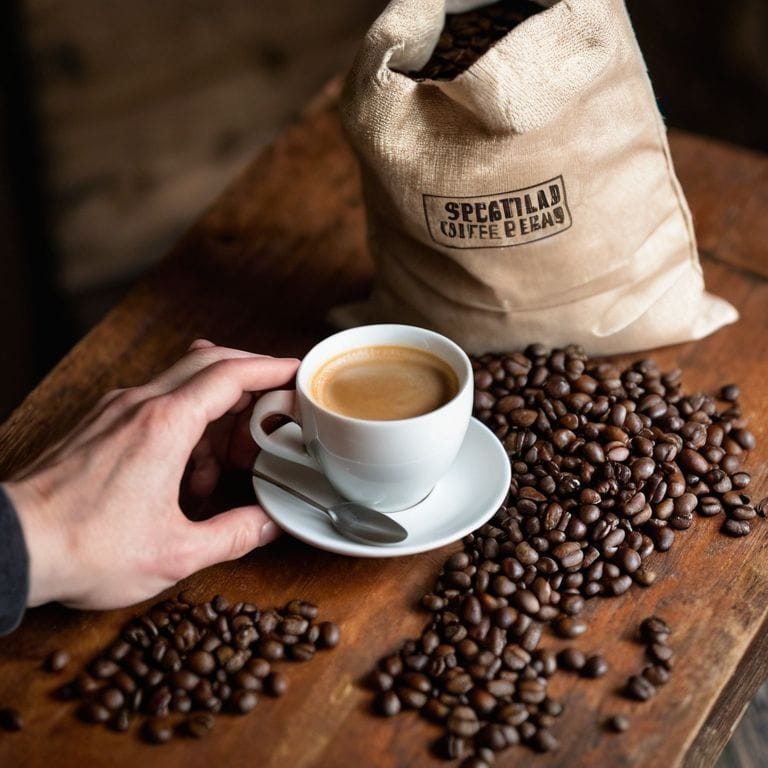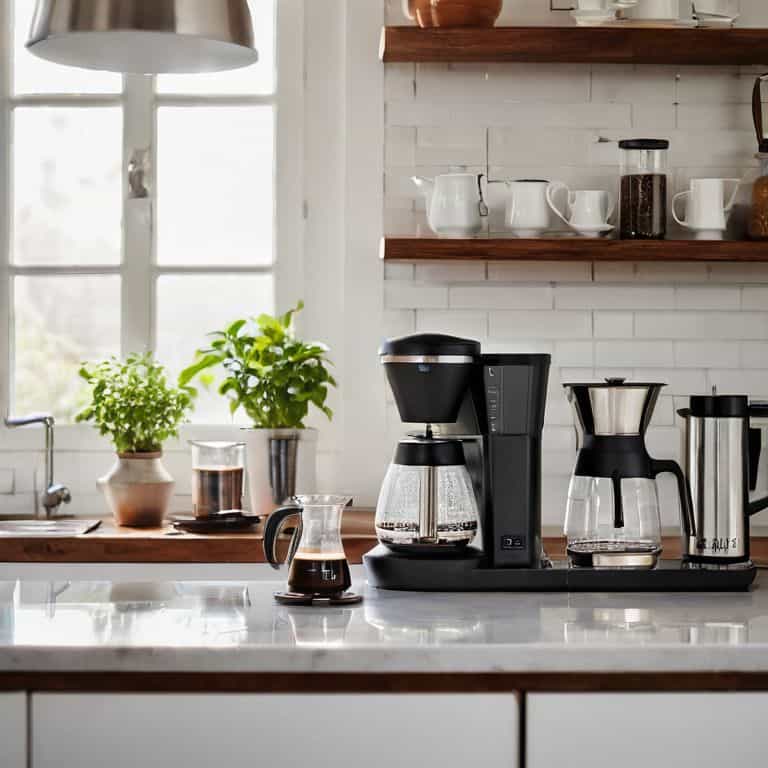I still remember the first time I was intimidated by the idea of understanding coffee tasting notes. It was during a coffee cupping session where everyone seemed to be throwing around terms like “notes of citrus” and “hints of chocolate.” I felt like I was the only one who didn’t speak the language. But as I delved deeper into the world of specialty coffee, I realized that it’s not about using fancy terminology – it’s about truly experiencing the flavors and aromas that each coffee has to offer.
As someone who’s spent years developing custom roast profiles and sourcing coffee from farms around the world, I’m excited to share my no-nonsense approach to understanding coffee tasting notes. I’ll cut through the hype and give you the honest, experience-based advice you need to elevate your coffee game. Whether you’re a coffee newbie or a seasoned aficionado, I’ll show you how to move beyond the ordinary and discover the hidden nuances that make each coffee unique. My goal is to empower you with the knowledge and confidence to explore the world of coffee without feeling overwhelmed by fancy tasting notes or overpriced coffee gadgets.
Table of Contents
Cracking Coffees Code

As I delve into the world of coffee, I’m reminded that coffee flavor profiles are not just about the taste, but about the story behind each bean. The journey from farm to cup is a long one, and understanding the nuances of coffee is crucial to appreciating its complexity. I’ve spent years developing my palate, and I can confidently say that sensory evaluation of coffee is an art that requires patience, dedication, and a willingness to learn.
When it comes to coffee tasting techniques, I always say that practice makes perfect. Blind tasting, or cupping, is a great way to hone your skills and develop your sense of smell. By isolating the aroma of a coffee, you can begin to identify the origin country and even the specific farm it came from. This skill has become a sort of superpower for me, allowing me to connect with the people and places behind each cup.
As a coffee connoisseur, I believe that coffee and food pairing is an essential part of the coffee experience. Understanding how different flavors interact with each other can elevate your morning routine from mundane to magical. By experimenting with various coffee roast levels and flavor profiles, you can discover new and exciting combinations that will leave you wondering how you ever settled for ordinary coffee.
Sensory Evaluation of Coffee Revealed
As I delve into the world of coffee, I find myself drawn to the sensory nuances that make each cup unique. The aroma, acidity, and body all work together to create a rich tapestry of flavors that can transport me to the rolling hills of a distant coffee farm.
In my experience, accurate evaluation of these sensory elements is crucial to truly appreciating a coffee’s character. By carefully considering the interplay between flavor, aroma, and texture, I can uncover the hidden stories behind each coffee and share them with others.
Uncovering Coffee Flavor Profiles
As I delve into the world of coffee, I’m reminded that each cup tells a story. The flavor profiles are a testament to the farm’s terroir, processing methods, and the careful hands that nurtured the beans. I’ve had the privilege of traveling to Central and South America, meeting the producers, and learning about their dedication to crafting unique flavor profiles.
When it comes to uncovering coffee flavor profiles, I rely on my senses, taking note of the aroma, acidity, and body. This sensory-focused approach allows me to appreciate the nuances of each coffee, from the bright, citrusy notes of a Kenyan AA to the rich, chocolatey flavors of a Brazilian Santos.
Understanding Coffee Tasting Notes

As I delve into the world of coffee, I’m reminded that coffee flavor profiles are a complex tapestry of flavors, aromas, and sensations. To truly appreciate a cup, one must consider the nuances of sensory evaluation, which involves analyzing the coffee’s acidity, body, and flavor notes. This process requires patience, attention to detail, and a willingness to explore the uncharted territories of coffee connoisseurship.
My experience as a specialty coffee buyer and roaster has taught me that coffee tasting techniques are essential for uncovering the hidden notes within a coffee. By using professional cupping notes, I can identify the distinct characteristics of a coffee, from its bright acidity to its rich, velvety body. This knowledge allows me to craft custom roast profiles that bring out the unique qualities of each coffee, resulting in a truly exceptional cup.
Whether you’re a seasoned coffee enthusiast or just beginning to explore the world of specialty coffee, developing your palate is key. I recommend starting with a coffee and food pairing guide to discover how different flavors and textures interact with coffee. As you embark on this journey, remember that understanding coffee is not just about tasting notes – it’s about experiencing the story behind each cup, from the farm to your table.
Elevating Palate With Coffee and Food
As I explore the world of coffee and food pairing, I’ve come to realize that elevating your palate is all about experimentation and discovery. By combining coffee with complementary flavors, you can unlock a whole new dimension of taste and aroma. I’ve had the pleasure of pairing rich, bold coffees with decadent chocolates and sweet pastries, and the results are nothing short of magical.
When it comes to perfect pairing, the key is to balance and contrast flavors. For example, a bright and acidic coffee can be beautifully balanced by a rich and creamy dessert, creating a harmonious and delightful taste experience. By exploring different coffee and food combinations, you can develop a deeper appreciation for the nuances of flavor and aroma, and discover new favorites to enjoy every day.
Mastering Coffee Tasting Techniques
As I delve into the world of coffee tasting, I’ve come to realize that sensory awareness is key to unlocking the full potential of a coffee’s flavor profile. By heightening my senses, I can pick up on subtle nuances that might otherwise go unnoticed. This skill takes time to develop, but trust me, it’s worth the effort.
To take your coffee tasting game to the next level, focus on developing your palate. This involves training your taste buds to recognize different flavor notes, from fruity and floral to nutty and chocolatey. With practice, you’ll be able to discern the unique characteristics of each coffee, and appreciate the craftsmanship that goes into creating these complex flavor profiles.
5 Essential Tips to Unlock the Secrets of Coffee Tasting Notes
- Start with high-quality, freshly roasted and ground coffee to ensure optimal flavor and aroma expression
- Train your senses by regularly cupping a variety of coffee origins and roast levels to develop your palate
- Pay attention to the coffee’s processing method, as it significantly impacts the flavor profile and overall character
- Use a consistent and detailed evaluation process, including assessing aroma, acidity, body, and flavor notes, to accurately describe the coffee’s taste
- Keep an open mind and be willing to revisit and revise your tasting notes, as your palate and understanding of coffee evolve over time
Key Takeaways: Elevating Your Coffee Experience
By understanding the nuances of coffee flavor profiles, you can uncover the unique characteristics of each coffee and elevate your palate to appreciate the subtleties of specialty coffee
Mastering coffee tasting techniques, such as sensory evaluation and cupping, can help you identify the distinct notes and aromas in your coffee and make informed decisions about the coffee you drink
Ultimately, the world of coffee is about more than just taste – it’s about the story behind each bean, the farmers who produce it, and the roast levels that bring out its unique qualities, making every cup a journey of discovery
The Heart of the Matter
Understanding coffee tasting notes is not just about deciphering a flavor profile, it’s about unraveling the story of the people, the land, and the passion behind every bean.
Amelia Rose
Unleashing the Full Flavor

As we conclude our journey through the world of coffee tasting notes, it’s essential to recap the key takeaways: understanding the nuances of coffee flavor profiles, mastering sensory evaluation techniques, and learning to pair coffee with food to elevate our palate. By grasping these concepts, we can appreciate the complexity and richness of specialty coffee and make informed decisions when selecting our daily brew. Whether you’re a coffee connoisseur or just starting to explore the world of specialty coffee, remembering that every cup tells a story of its origin and the people behind it is crucial.
As you embark on your own coffee discovery journey, remember that the art of coffee tasting is a lifelong pursuit. Don’t be afraid to experiment, try new flavors, and push your palate to new heights. With an open mind and a willingness to learn, you’ll uncover a world of flavors and aromas that will leave you inspired and eager for more. So go ahead, take a sip, and let the story of the coffee unfold – your taste buds will thank you.
Frequently Asked Questions
How can I develop my sense of smell to better identify coffee aromas?
To develop your sense of smell, start by practicing with essential oils or herbs, then move to coffee. I recommend blind smelling different coffee origins to hone your skills. Pay attention to nuances – floral, fruity, or nutty notes. With time and practice, you’ll be able to pinpoint aromas like a pro, and your coffee tasting game will soar!
What's the difference between acidity and bitterness in coffee, and how do I distinguish between them?
For me, acidity is like a bright, snappy spark, while bitterness is a dull, lingering finish. To distinguish between them, pay attention to how the flavors hit your tongue: acidity is often felt in the front, while bitterness settles in the back.
Can you recommend a beginner-friendly coffee tasting guide or resource to help me get started with understanding coffee flavor profiles?
For a beginner-friendly guide, I swear by the SCA’s Coffee Taster’s Flavor Wheel – it’s a game-changer. I also recommend checking out James Hoffmann’s YouTube channel for approachable, expert insights into coffee tasting and flavor profiles. Trust me, these resources will get you started on an incredible sensory journey!



